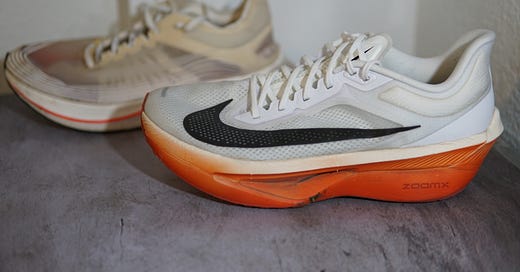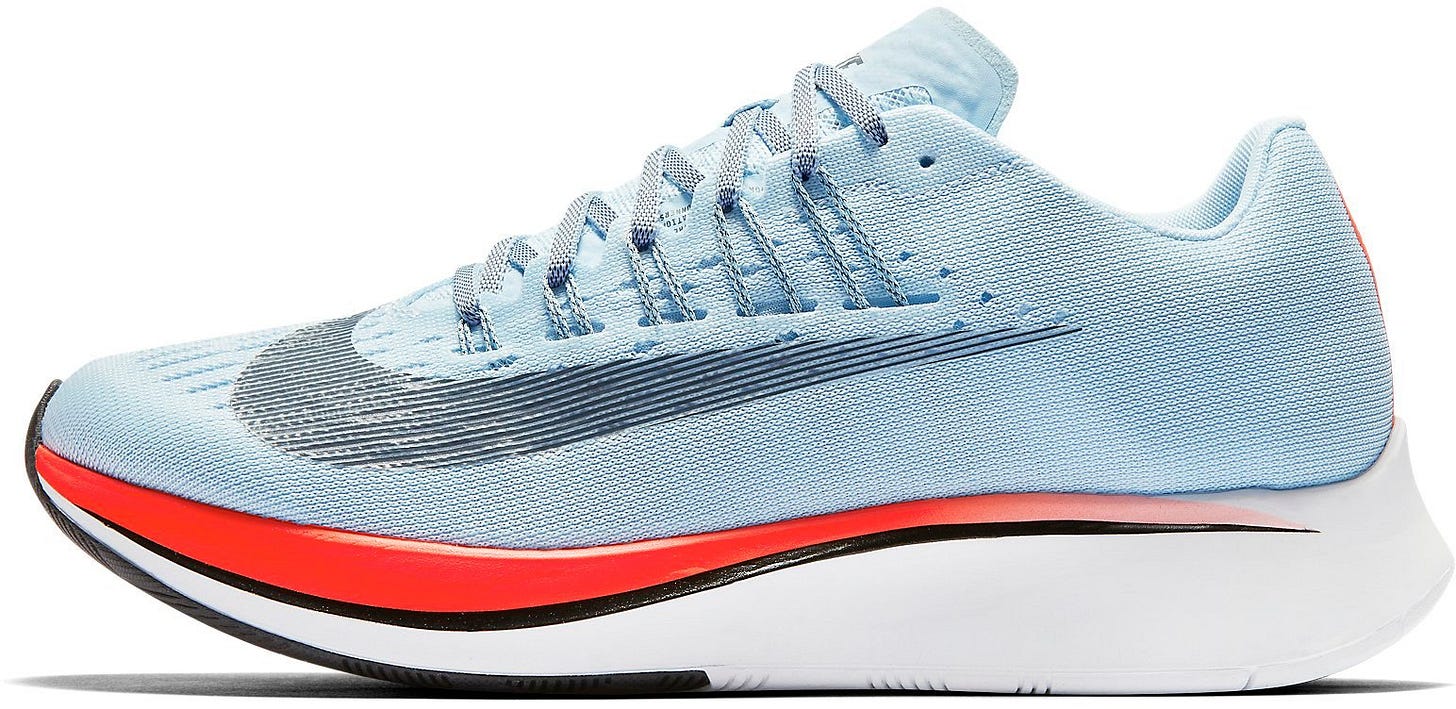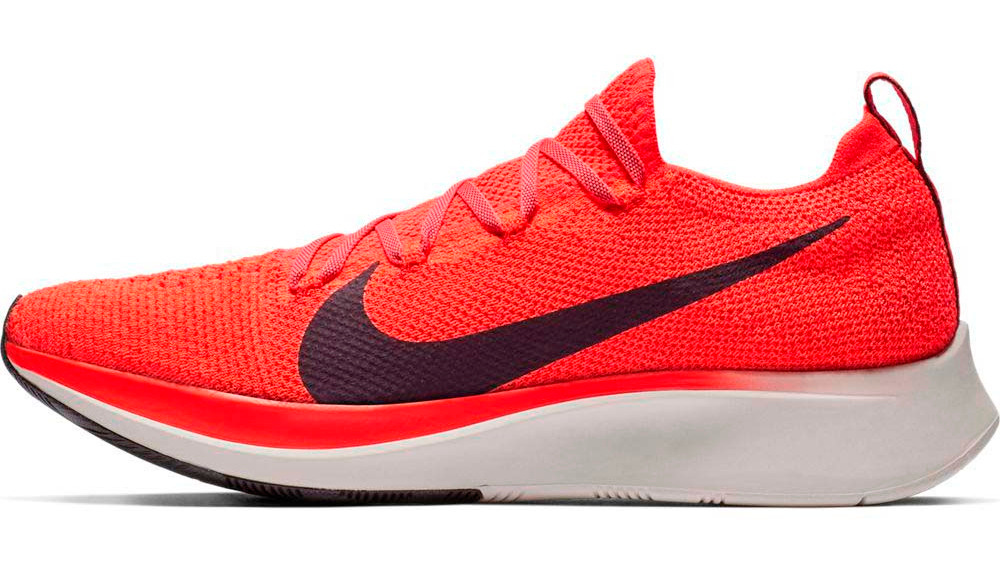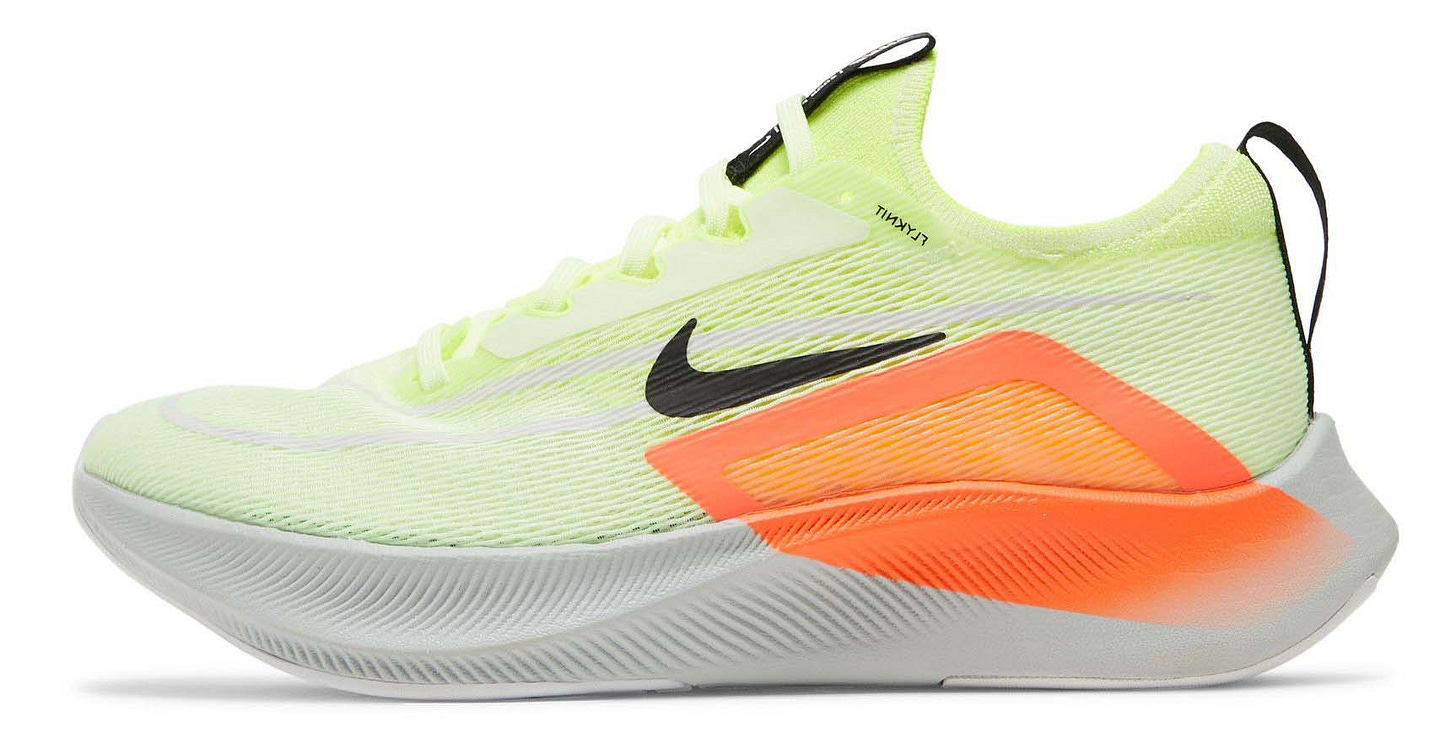The Nike Zoom Fly 6 has recently hit the market, marking a significant overhaul from its predecessors. But where did this shoe begin, and how has it evolved over the years? Let’s take a deep dive into the history and transformation of this iconic running shoe.
The Beginnings: Zoom Fly
2017
In 2017 the Zoom Fly debuted as a companion to the groundbreaking Vaporfly. It shared similarities but with key differences:
Midsole: Instead of the ZoomX foam in the Vaporfly, the Zoom Fly utilized Lunarlon foam with a React core.
Plate: It swapped the Vaporfly’s carbon fiber plate for a nylon plate.
Upper: More padded and training-oriented, making it ideal for speed-day workouts.
These features made the Zoom Fly a durable and budget-friendly training partner to the Vaporfly.
Zoom Fly SP: A Lifestyle Crossover
2017/18
Shortly after the original release, Nike introduced the Zoom Fly SP. Although it was marketed as a lifestyle shoe, it still maintained impressive performance capabilities. Key features included:
The same midsole and outsole as the original Zoom Fly.
A lightweight, racing-inspired upper made from Vaporweave, a material later used in the Vaporfly series.
This model paid homage to the Vaporfly prototype and gained popularity as both a performance and fashion shoe.
Zoom Fly Flyknit (FK): A Step Closer to Vaporfly
2018
The second iteration of the Zoom Fly leaned even closer to the Vaporfly with notable updates:
Upper: Flyknit material, identical to the Vaporfly FK.
Plate: Carbon fiber Flyplate, matching that of the Vaporfly 4% FK.
Midsole: 100% React foam, providing a more energetic and responsive ride.
These enhancements elevated the Zoom Fly FK making it both a versatile training and racing shoe.
Zoom Fly 3: Building Its Own Identity
2019
The Zoom Fly 3 marked a turning point in the shoe’s evolution:
Upper: Vaporweave material, echoing that of the Vaporfly Next%.
Midsole: Gained more stack height, still React foam, but transitioning from a 10mm to an 8mm drop.
Outsole: Similar to the Vaporfly Next%, yet tailored for durability.
This model began to distinguish the Zoom Fly as a carbon-plated trainer rather than merely a budget Vaporfly.
Zoom Fly 4: Comfortable but Heavier
2021
In 2021, the Zoom Fly 4 received a modest update:
Upper: The Vaporweave material was replaced with engineered mesh and a Flyknit collar. Thish helped to enhance comfort, but did add some weight.
Midsole and Outsole: Retained React foam, carbon fiber Flyplate, and same outsole from v3.
With the additional weight gains, this version shifted further from the Vaporfly lineage, solidifying the Zoom Fly as more of a durable training shoe instead of a budget racer.
Zoom Fly 5: A Radical Redesign
2022
The Zoom Fly 5, released in 2022, marked a big change in the Zoom Fly since it was the first to drop React foam infavor of ZoomX:
Midsole: Recycled ZoomX scraps encapsulated in SR-02 EVA foam.
Plate: Retained the carbon fiber Flyplate.
The Zoom Fly 5 seemed to be positioned as a max-cushion plated trainer, with up-tempo versatility, but the recycled ZoomX core fell short of delivering the bounce and energy runners expected.
Zoom Fly 6: A Return to Form
2024
The latest iteration, the Zoom Fly 6, delivers meaningful improvements:
Midsole: A top layer of real ZoomX foam paired with SR-02 EVA foam, restoring the energetic ride runners were missing from v5. More centrally located carbon-fiber Flyplate.
Design: Resembles the Alphafly 3 without Air Zoom units, bringing the aesthetic closer to Nike’s racing shoes.
Upper: Woven mesh for a training-oriented fit.
With these updates, the Zoom Fly 6 positions itself as a soft, responsive, and versatile super trainer that became capable of race day once again.
Conclusion
The Nike Zoom Fly started as an affordable and durable alternative to the Vaporfly, serving as an ideal training companion. Over the years, it has evolved into its own entity, culminating in the Zoom Fly 6—a super trainer that combines comfort, durability, and performance.
Whether you’re logging daily miles or picking up the pace, the Zoom Fly 6 promises to deliver. What are your thoughts? Which iteration of the Zoom Fly is your favorite? Do you prefer its evolution into a standalone trainer, or do you miss its Vaporfly-inspired roots? Let us know in the comments!












